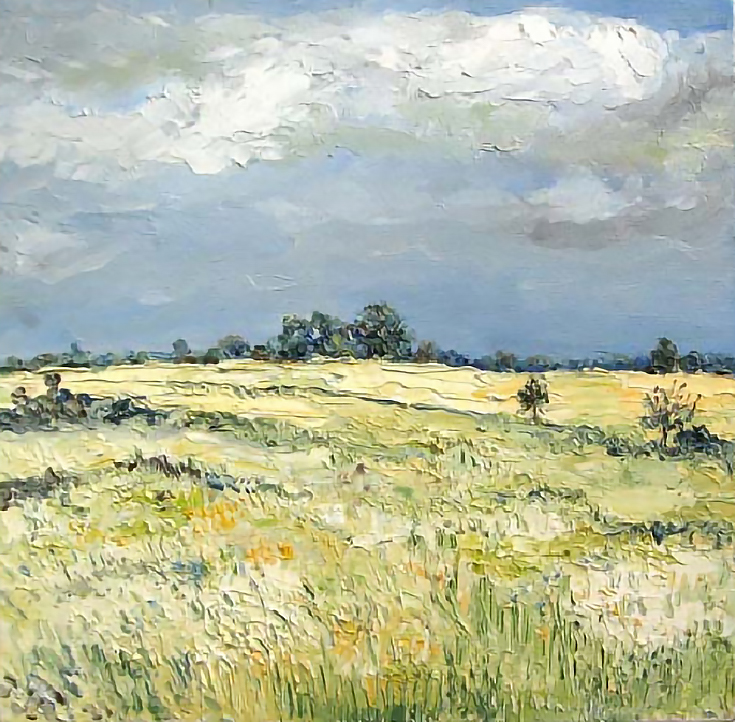Some paintings have a story. This one sure does.
It was my first in a series of paintings that I did en plein air just before the wheat harvest. I was in the fields along the Yumuna river in Noida, a city in Northern India. I went in with my painting equipment in the late afternoon, as the April sun can be very strong early on. I found the wheat just the right colour—whitish and golden yellow.
After finding a spot, I went about starting my work. Working in oils is always messy and complicated, and doing it outdoors can sometimes be tormenting! I was quite happy this painting came out well. Some don’t and then there is a struggle to make it well. I hate that moment—when the painting is not getting the right look.
So I was immersed in my work, trying to finish the painting, when I noticed a small girl standing close to my elbow. She blurted out a startled “hello!” and I realised on the road next to the fields was a big black car, and next to it her parents, ogling at me.
People coming up and asking questions is all part of the plein air adventure. I smiled at them, so they all trooped in and the usual conversation started.
“Wow! Lovely!! You just did that…? We saw you when we were going towards our farmhouse an hour back. You paint so fast, do you sell them?” Etc, etc. They went away promising to come over to my studio and buy something (which of course they never did!)
By the time I cleaned my brushes and palette and packed up, it was dark, so I dumped all the equipment into the back seat and put the wet painting in the dickey of the car.
The biggest problem with oils is bringing the wet painting home safely. My work is thick impasto, with fresh colours like a relief. One little touch will completely spoil it, if the painting is still wet.
But I generally keep the car dickey empty, so I was able to place the painting flat on the floor, face up, where it wouldn’t be bothered.
On the way back I stopped for some tea at my friend’s small tea shop next to the fields. Then, by the time I got home, I didn’t want to open the dickey in the dark and carry the wet canvas three floors up, so I left it for the next day. (The rest of my painting gear I always leave in my car.)
The next morning I had some work to do in Delhi so I didn’t even check the painting, and just left it in my car. After finishing my work I drove straight back to the fields, and quickly started on a new painting without taking out the wet one. I often do two at once, so that when I’m done I can line up the two works side by side and compare them and do some last minute touch ups.
Finally I finished the second painting. I went to my car to open the dickey to take out the first one. . . and what I saw broke my heart!!
The night before I hadn’t realised there was a stupid old empty plastic bottle back there. Throughout all my driving, it had been using my wet painting as its own private dance floor!
All of my lovely thick impasto was smudged and scraped. The painting was completely ruined. This had never happened to me before (at this scale, anyway) although mistakes do happen occasionally.
So what did I do about it?
Well, what else could I do? With a dogged determination I went about recreating the piece. I don’t like to waste a good painting once it’s been finished!
In the end, although it took me twice as long as any normal painting, I doubt that anybody would ever guess this painting had a makeover! Can you??
To see more paintings by Animesh, please visit his website at animeshroy.com.
This post may contain affiliate links.

